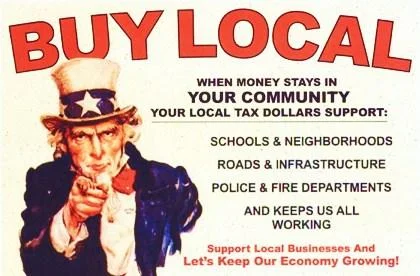A THRIVING COMMUNITY FOR THIS GENERATION AND THE NEXT
Wealth can be described by counting the number of dollars sitting in a bank, or it can be described by evaluating the richness of a community’s cultural life, local economy, built environment, and availability of important natural resources. Historic Districts only exist because of those forward-thinking generations who elected to invest in durable buildings not only for themselves, but also for us. A sustainable community is one that can sustain itself for generations to come. All it takes is for one generation to consume its resources without concern for longer-lasting achievement to leave the next generation with little hope for their own future.
THREE GOALS OF CIVIC CONSERVATION
SOCIAL
SUSTAINABILITY
Local expressions of civic arts, such as cuisine, dance, theater, language, music, even the sartorial arts, all play an important role in the sustainability of a community. Community activities that encourage a child’s love of their hometown and connect them to other generations are an unqualified positive investment in the future of a community. Therefore, community parades, street festivals, neighborhood competitions, farmers markets, and other opportunities for civic gathering and engagement are integral to the sustainability of a community.
ECONOMIC
SUSTAINABILITY
In our age of mobility, a love of a community is not enough to sustain a replacement population every generation. For that, a community must have sustainable employment and educational opportunities, affordable costs of living, varied housing options, and opportunity for enterprise and small business development. Local economic investments (both big and small) create what is called the "local multiplier effect."
ENVIRONMENTAL
SUSTAINABILITY
The direction taken during the 20th century has been responsible for much of the degradation of the natural world. While making use of the resources of our places, we must also ensure that we do so with balance and a mind to the long-term sustainability of place. For the health of ecosystems, open land must be maintained. Well-designed, low-rise cities accommodate appropriate densities thereby preserving open and agricultural lands without the need for the environmentally destructive high-rise tower or suburban sprawl.
In sustainable communities,
THESE COMPONENTS:
support
THESE COMPONENTS:
and vice versa!
COLLABORATION OF CITY AND COUNTRYSIDE
CIVIC CONSERVATION INSPIRATION
SLOW FOOD and FARM-TO-TABLE
Dhiru Tadani
"The disturbing trend toward uniformity in food and in culture threatens to make our planet a much less interesting place to live. Yet food is only the most visible example of this trend. Tugging on that one loose thread unravels a whole host of issues related to how we choose to live our lives: from urban sprawl to family farms, organic agriculture, and farmers markets; from the ethics of bioengineering to the re-creation of local economies and regional 'foodsheds.'
"Speed and the general rat race force rush upon us, but this should not stop us from doing everything we can to defend the traditions, products, and habits of our country... To say that we should protect the production of 'cultural assets' is simply not enough... Just claiming that certain characteristic cultivars and certain local processes should be preserved will get us nowhere. We need to make sure that those directly involved in such preservation can count on a reasonable quality of life."
- Enzo Ghigo, President of the Piedmont Regional Council, from Slow Food.
"In France, a new fashion is about to take the world of enology by storm. New labels extolling neglected or forgotten grapevines are sprouting up everywhere."
- Micheal Smith, The Revival Route. From: Slow Food



















